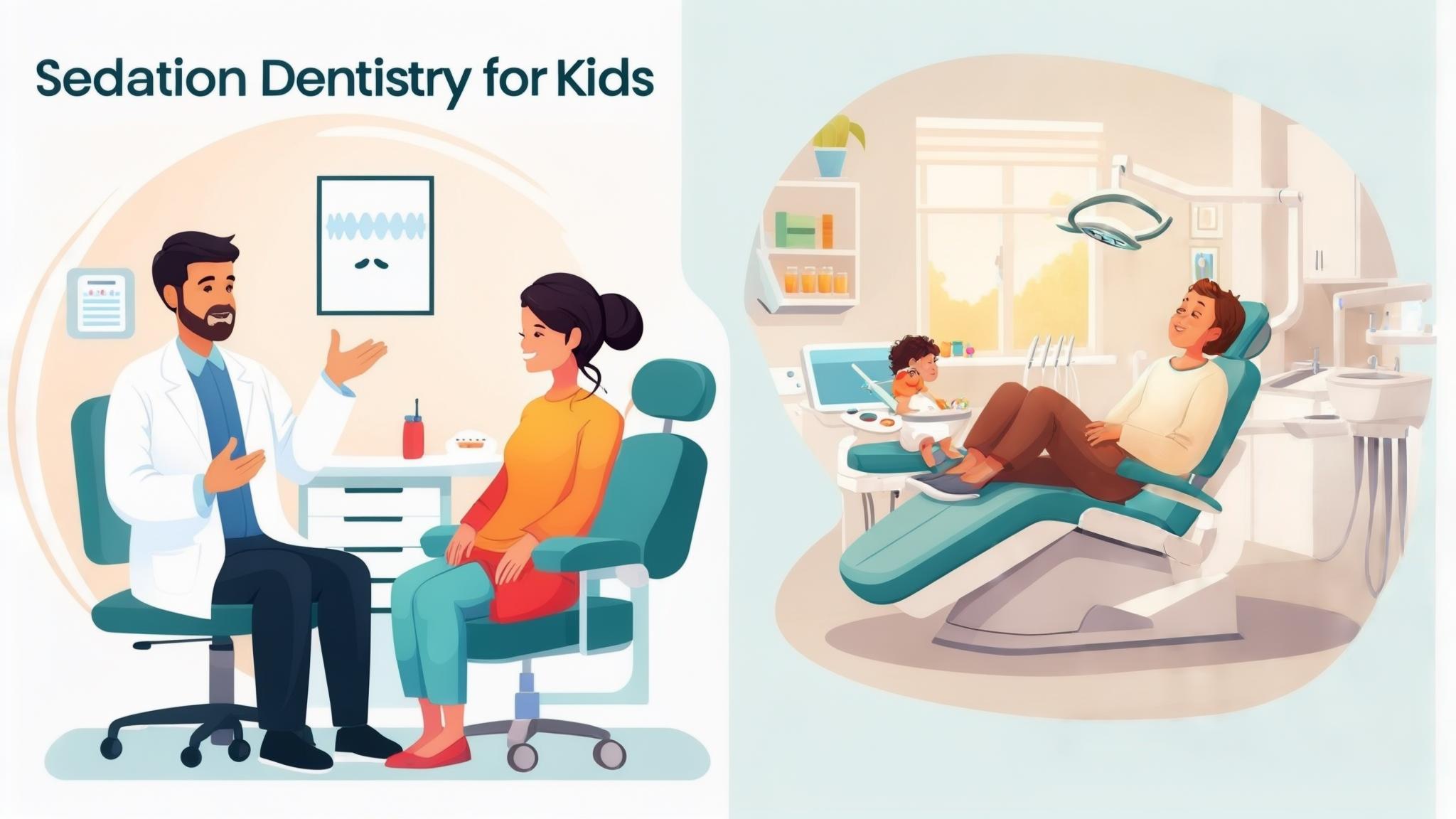Introduction
When it comes to children and dental visits, a little anxiety is quite common. Sedation dentistry offers a way to ease this anxiety and make dental procedures more comfortable for young patients. But what exactly is sedation dentistry? In simple terms, it's the use of medication to help children relax during dental treatments. This article will explore why addressing dental anxiety in children is crucial and how sedation can be a safe and effective solution.
Understanding Sedation Dentistry
What is Sedation Dentistry?
Sedation dentistry involves using medication to help patients remain calm and relaxed during dental procedures. There are different types of sedation available:
- Nitrous Oxide: Often called "laughing gas," this is a mild sedative inhaled through a mask. It's quick to take effect and wears off easily.
- Oral Sedation: This involves taking a pill that makes the child drowsy yet awake during the procedure.
- IV Sedation: Administered through a vein, this type offers a deeper level of sedation and is usually reserved for more complex procedures.
It's important to distinguish between sedation and general anesthesia. Sedation relaxes the patient, while general anesthesia renders them completely unconscious.
Benefits of Sedation Dentistry for Children
Sedation dentistry offers several benefits:
- Reduces Anxiety and Fear: Children who fear the dentist can feel more at ease, making the experience less stressful.
- Allows for Longer Procedures: Sedation can make it easier to perform lengthy or complex treatments in one visit.
- Enhances Cooperation: A relaxed child is more likely to cooperate, allowing the dentist to work more efficiently.
When is Sedation Dentistry Used for Children?
Situations That May Warrant Sedation
Sedation may be considered in several scenarios:
- High Levels of Anxiety or Fear: For children who are particularly nervous about dental visits.
- Special Needs Children: Those who may have difficulty understanding or cooperating during procedures.
- Extensive Dental Work Required: When multiple procedures are needed in a single visit.
- Difficulty Sitting Still: For younger children or those with conditions that make it hard to remain calm.
Age Considerations
Age plays a role in determining the type of sedation used. Generally, nitrous oxide is suitable for most ages, while oral and IV sedation may be more appropriate for older children. A dentist will evaluate a child's readiness and discuss the best options with parents.
Safety of Sedation Dentistry
Pre-Sedation Assessment
Safety is a top priority in sedation dentistry. Before any procedure, a thorough evaluation is conducted:
- Medical History Review: Understanding any past medical issues or allergies.
- Physical Examination: Ensuring the child is healthy enough for sedation.
- Discussion of Allergies: Identifying any potential reactions to sedatives.
Monitoring During Sedation
During the procedure, the dental team closely monitors the child:
- Vital Signs: Heart rate, breathing, and blood pressure are continuously checked.
- Dental Team's Role: Skilled professionals ensure the child's safety throughout the procedure.
Post-Sedation Care
After sedation, children are monitored until they are fully awake:
- Recovery Monitoring: Ensuring they return to their normal state safely.
- Parental Instructions: Providing guidelines for care once home, such as dietary restrictions or activity limitations.
Common Concerns and Misconceptions
Addressing Fears About Sedation
Many parents have concerns about sedation. Let's separate myth from fact:
- Myths vs. Facts: Sedation is safe when administered by trained professionals.
- Safety Record: Pediatric sedation dentistry has a strong safety record when proper protocols are followed.
Discussing Potential Side Effects
While generally safe, sedation can have side effects:
- Common Side Effects: Nausea and drowsiness are typical but usually mild.
- Rare Complications: These are infrequent and managed promptly by dental professionals.
Conclusion
Sedation dentistry can be a game-changer for children who experience anxiety about dental visits. By addressing fears and ensuring comfort, sedation helps create positive dental experiences. Parents are encouraged to discuss sedation options with their dentist to determine the best approach for their child.
References
- American Academy of Pediatric Dentistry: Sedation Guidelines
- National Institutes of Health: Pediatric Sedation Research
Call to Action
If your child is anxious about dental visits, consider scheduling a consultation with a pediatric dentist. Feel free to share your experiences or ask questions in the comments section. Together, we can make dental visits a positive experience for every child.

